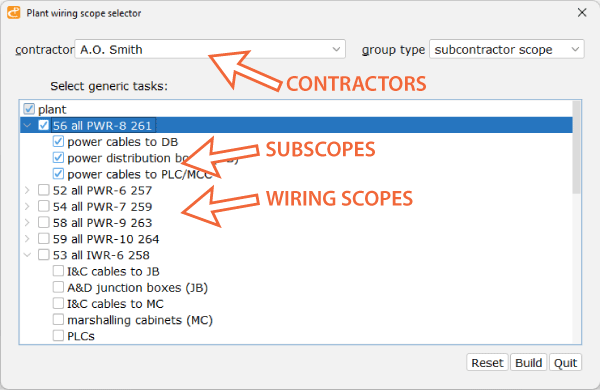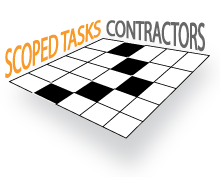
Allocating scoped tasks to contractors is the final step of project planning. Once done, the subcontracted work scopes and schedules may be extracted from the project schedule and turned into procurement-of-work orders. Examples of subcontracted work are civil engineering, construction, electrical works, and commissioning.
Similarly, human resources - project managers, engineers, consultants, and auditors - shall be assigned to scoped tasks before the commencement of the megaproject as companies normally do not have a resource pool available on request.
Contractor work definition and resources scheduling are the weakest link in megaprojects due to the mind-blowing amount of tasks and restraints on time and resources; it is never done by the book.
Crenger.com automates this process by introducing a set of user interfaces (UI) reflecting different ways of linking contractors or human resources to the project scopes as scope dominates in resource capacity planning, not the nature of the task. This is a substantial deviation from conventional practice centered on linking a named resource to a specific task.
UI creates business rules for the contractors and resources to be assigned to the schedule's tasks. The rules do the work. Further, they may be grouped in three different ways.
- all tasks, custom scope
- custom tasks, all scopes
- custom tasks, custom scopes
In the simplest case of Quick Resource Allocator, any work package (WP) of Work Breakdown Structure (WBS) may be turned into exactly one plant-wide scope of work (SOW). The user selects the work packages and the contractor and the rest is done by software - the sub-schedule is cropped from the main one, and the work order content is created.
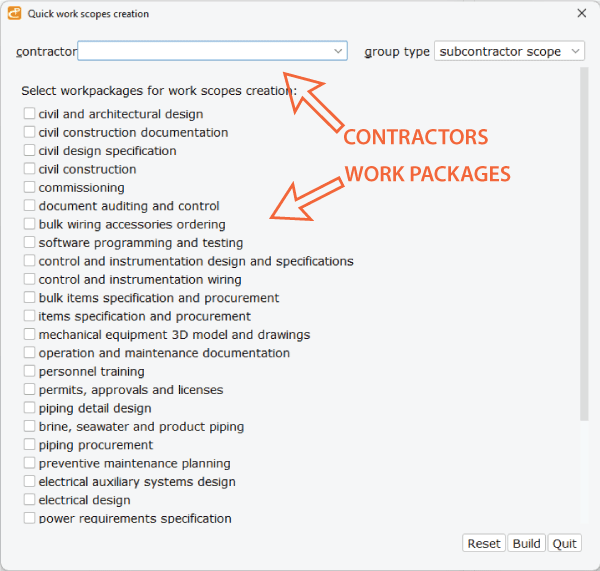
Custom Resource Allocator features the most advanced interface. It is shown below. Here any combination of WP, task, and scope may be assigned to a contractor.
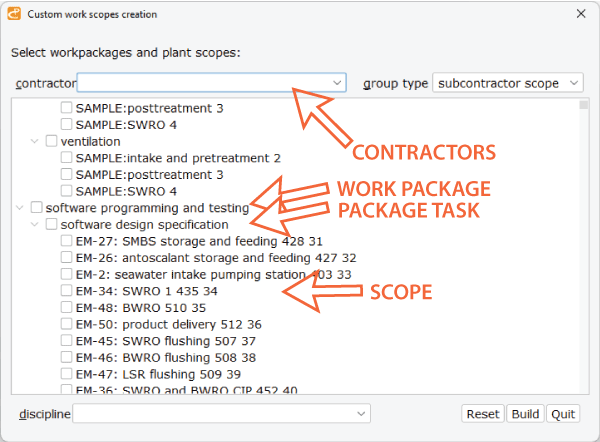
Aforementioned resource allocators use WBS and WP as links to the actual project schedule. They explicitly map resources to tasks. Generic resource allocator (GRA) with the interface shown below implements mapping implicitly - through disciplines and the project phases. Here the plant is represented by a collection of process modules (PM). PM is a building block of Process Flow Diagram (PFD) and Reliability Block Diagram (RBD). The disadvantage of GRA is the disregard of activities common for all PMs.
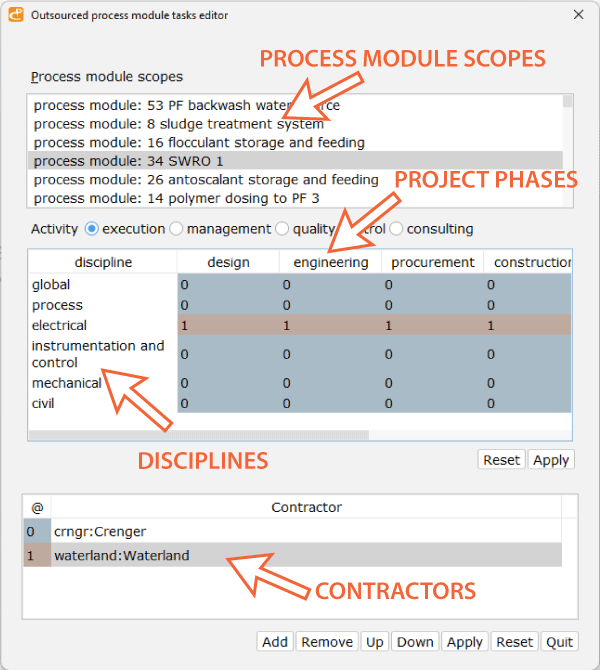
Similarly, plant electrical and instrumentation and control works are covered with 3 Scope Allocators. Here the standard scopes are the plant wiring areas or categories - power supply and instrumentation and control systems design. Below is an example of a wiring scope allocator using plant wiring areas.
